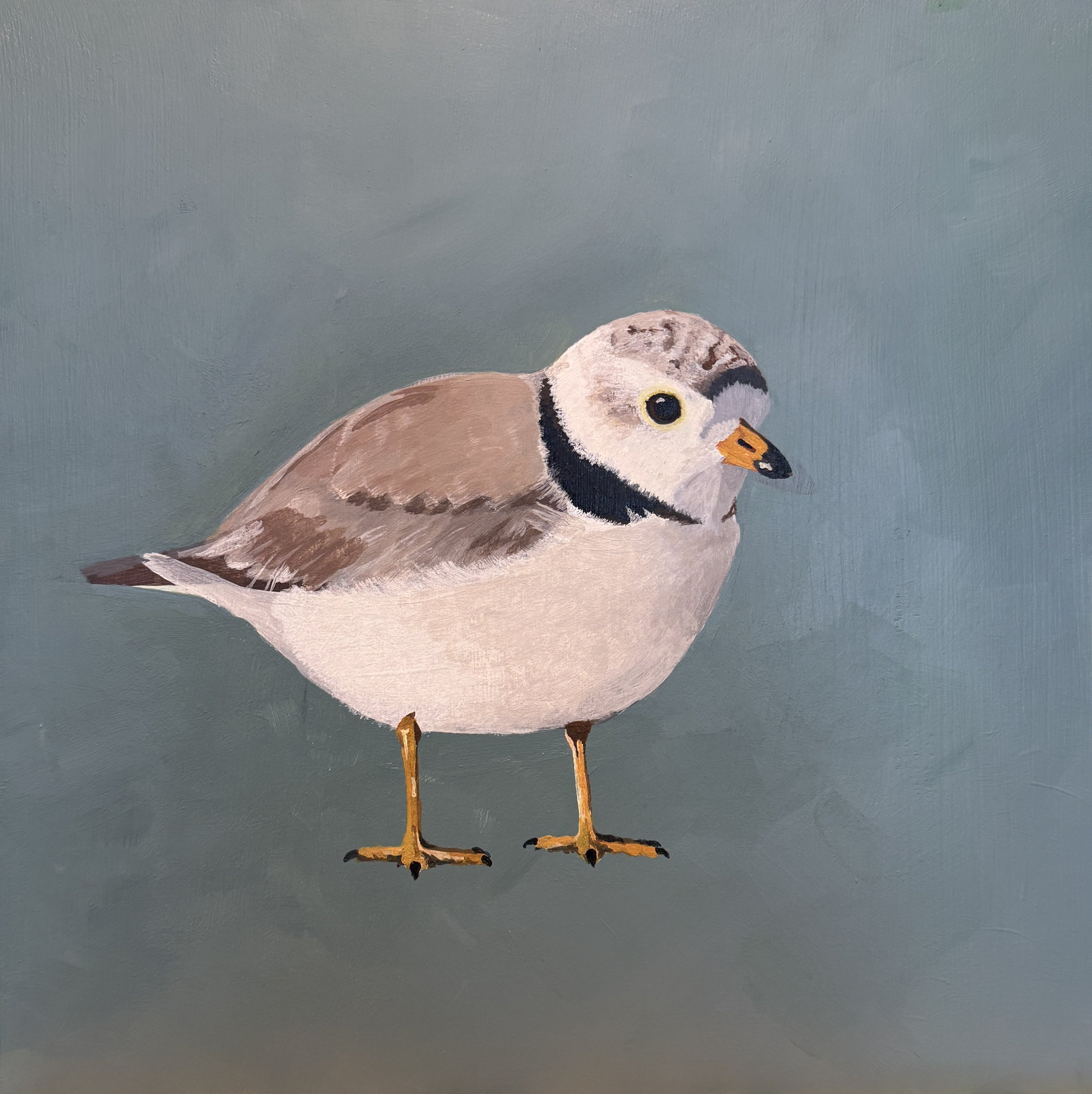Feathers, Tides, and Fragility: The Changing Shores of Our Vulnerable Birds
Stilt Sandpiper
This Stilt Sandpiper wades along a reedy waterway. Available soon at eallenfineart.com/shop!
There’s something magical about standing at the edge of the water, where the tide pulls back to reveal little ripples of sand and glints of seashell. If you’re lucky, you might catch sight of a stilt sandpiper picking delicately through the shallows, or a piping plover trotting along the beach, looking like it has somewhere very important to be.
I grew up on the gulf coast. My dad went into the Navy after high school and never really left the water when he got out. He dredged canals, crawfished in a small flatbottomed boat, and owned at least a couple of shrimping boats that he used to shrimp the gulf coast. My earliest memory of his boats was a neglected little tug boat of his that had fallen far from it's former glory and useful life. It wasted away at Southern Shipbuilding in Slidell, Louisiana. I remember being very small and going with him to the shipyard and him pointing it out to me. The name of this tugboat was The Sandpiper. I've had a fondness for sandpipers ever since.
I’ve always been drawn to birds — not just for their beauty, but for what they can tell us about the health of our environment. The stilt sandpiper, for instance, is a long-distance traveler, migrating all the way from the Arctic tundra down to South America. It relies on a chain of healthy wetlands and mudflats along the way, like beads on a necklace. Lose a few beads, and the whole journey becomes impossible.
Piping Plover
This little guy is still a work in progress, but he’s really coming along!
The piping plover stays closer to home, nesting on sandy beaches along the Atlantic Coast, the Great Lakes, and parts of the Great Plains. Their nests are barely more than a small scrape in the sand — easy to miss unless you know exactly what to look for. Which means they’re also easy to step on, or disturb, without realizing it.
Unfortunately, both of these species are up against some tough odds. Rising sea levels are shrinking their nesting space. Beach development and boardwalks cut into the little bit of shoreline they have left. And sometimes, even well-meaning beachgoers — walking dogs, setting up chairs — can unknowingly cause a nest to fail.
As an artist, I find that painting these birds is more than an act of observation; it’s a way to bear witness. Capturing the light in a sandpiper’s eye or the subtle grays and creams of a plover’s feathers reminds me that these aren’t just “pretty birds” — they’re living creatures with a story, and that story is unfolding right now.
We can help by supporting beach closures during nesting season, backing habitat restoration projects, and keeping dogs leashed in sensitive areas. Small choices add up.
Our shores are changing. But if we pay attention — with our eyes, our science, and maybe even our paintbrushes — we can help make sure stilt sandpipers and piping plovers still have a place to land, rest, and raise their young for years to come.
References
Connecticut Insider. (2024, July 12). Piping plover population improving in Connecticut, but still needs protection. Retrieved from https://www.ctinsider.com/connecticut/article/ct-piping-plover-beach-bird-sandpiper-20768866.php
Florida Fish and Wildlife Conservation Commission. (n.d.). Piping plover. Retrieved from https://myfwc.com/wildlifehabitats/profiles/birds/shorebirdsseabirds/piping-plover/
National Park Service. (n.d.). Piping plover management on Fire Island. Retrieved from https://www.nps.gov/fiis/learn/management/piping-plovers-management.htm
New York State Department of Environmental Conservation. (n.d.). Piping plover. Retrieved from https://dec.ny.gov/nature/animals-fish-plants/piping-plover
Ocean Portal, Smithsonian Institution. (n.d.). Protecting piping plovers: How conservationists shield these shorebirds from extinction threats. Retrieved from https://ocean.si.edu/protecting-piping-plovers-how-conservationists-shield-these-shorebirds-trio-extinction-threats
Ruthrauff, D. R., et al. (2023). North America’s shorebirds: The urgent need for conservation. The Condor, 125(2), duad003. https://doi.org/10.1093/condor/duad003
Wikipedia contributors. (2025, January 29). Climate change and birds. In Wikipedia. Retrieved from https://en.wikipedia.org/wiki/Climate_change_and_birds
Wikipedia contributors. (2025, February 3). Stilt sandpiper. In Wikipedia. Retrieved from https://en.wikipedia.org/wiki/Stilt_sandpiper
*A Note on How This Post Was Made
I sometimes team up with AI tools to help shape my blog posts—kind of like having a brainstorming buddy who never runs out of ideas. I always review, edit, and add my own touch, so everything you read here still comes straight from my love of art, nature, and birds.


